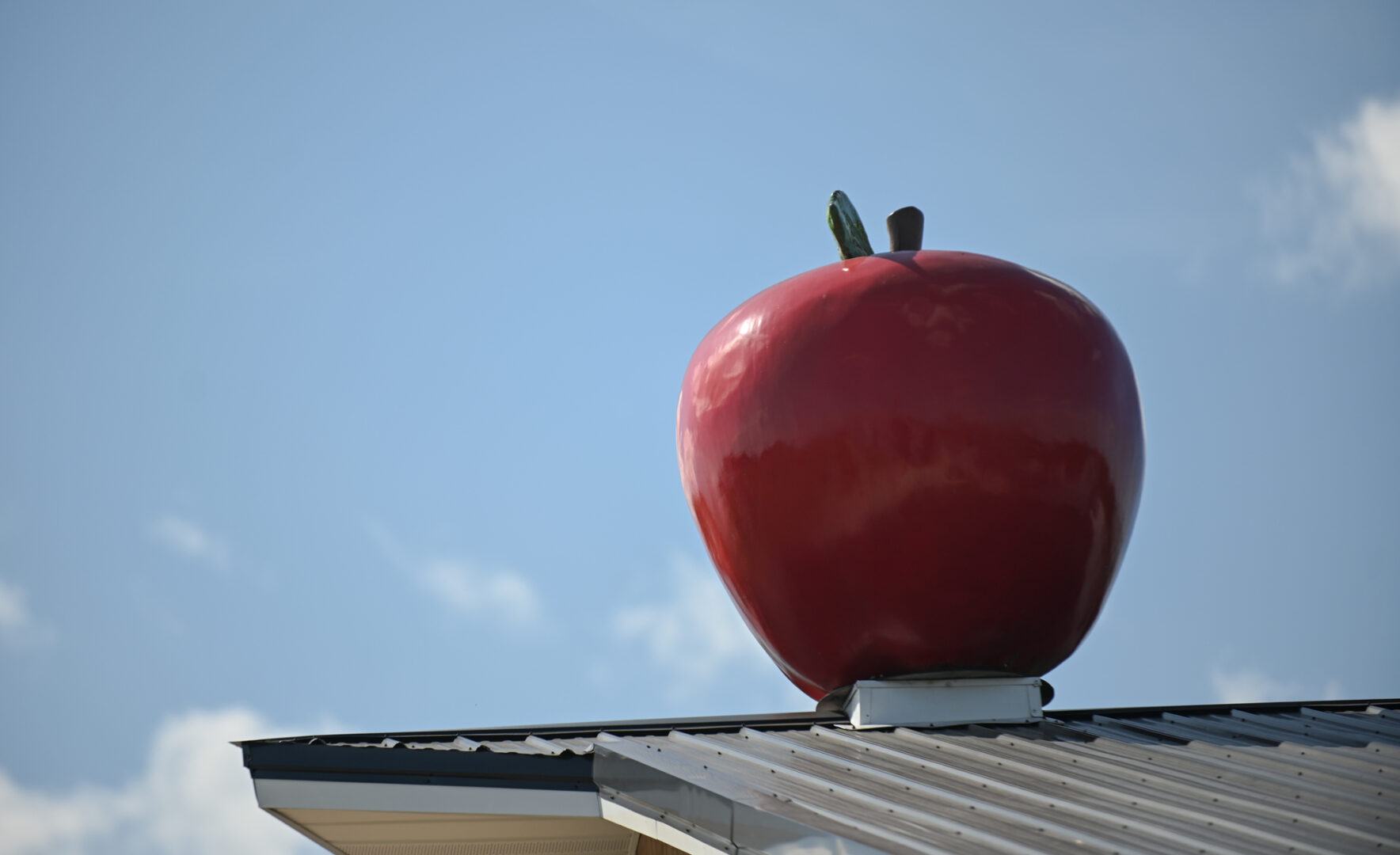
Maple Lawn Farms in York County on Sept. 20, 2022.
Jeremy Long / WITF


Maple Lawn Farms in York County on Sept. 20, 2022.
Jeremy Long / WITF

Jeremy Long / WITF
Maple Lawn Farms in York County on Sept. 20, 2022.
Hugh McPherson’s father planted the first apple orchards on the family farm in southern York County about 30 years ago, choosing varieties such as Red Chief, Smoothee Gold, and McIntosh.
McPherson grew up around the trees, helping in the harvest, and developing the perfect wrist motion for effortlessly plucking an apple from the branch–just a lift and a quick twist.
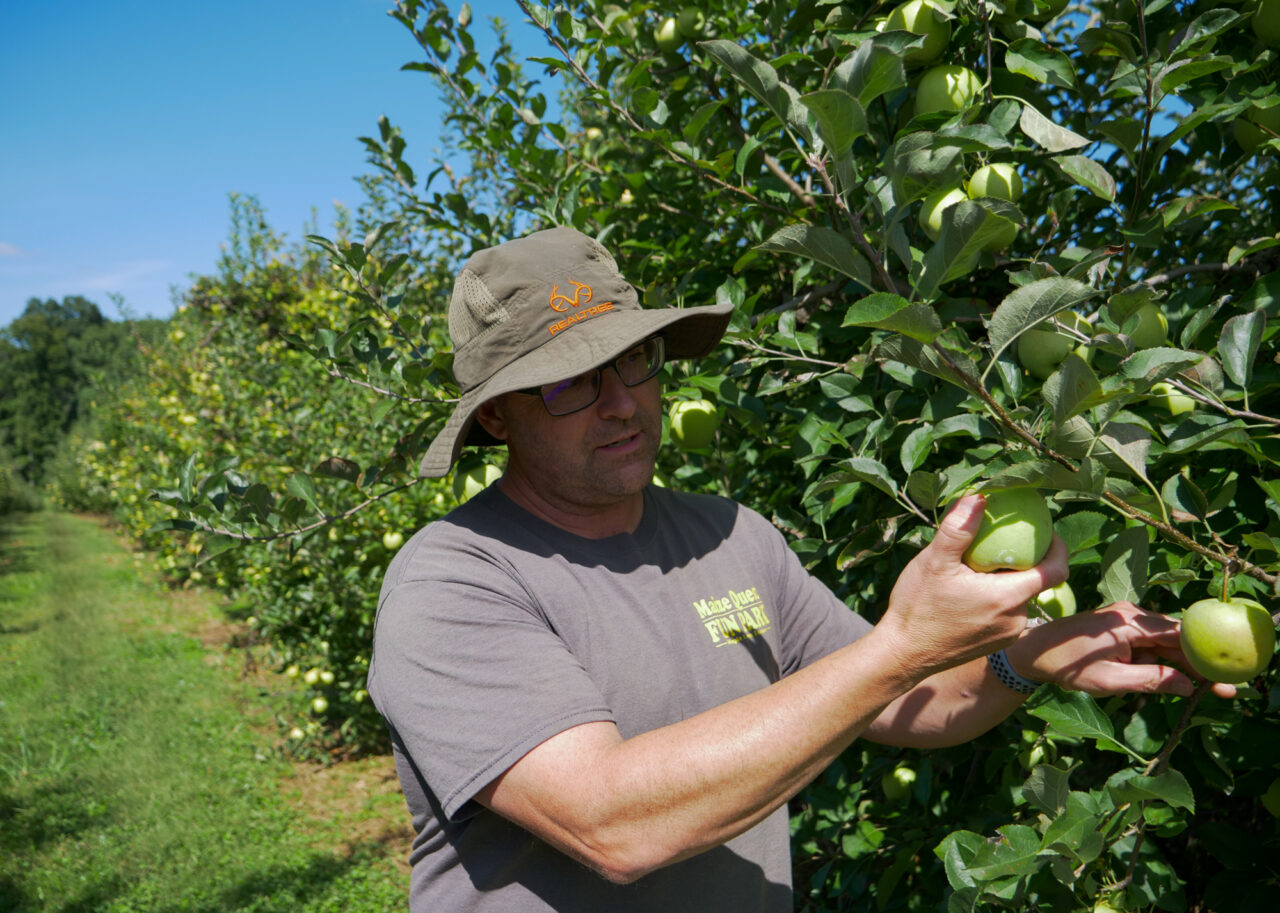
Jeremy Long / WITF
Hugh McPherson, the fifth generation farmer, at Maple Lawn Farms in York County, picks an apple on Sept. 20, 2022.
But now, the fifth generation farmer is picking new apple varieties.
He said McIntosh apples did well when winters were consistently cold.
“The McIntosh needs that cold night to put color on it,” McPherson said. “And in the end, for us, they just started turning soft on the tree. They wouldn’t end up getting red and crisp.”
McPherson said he’s been strategically looking for apples that do well in warmer weather for the last decade.
He’s removed the old McIntosh trees and is replacing them with sweet, crunchy varieties like Cosmic Crisp. It’s just one of the adjustments he’s making as the family farm weathers the effects of climate change and unpredictable weather.
Listen:
As the climate changes and brings more risks to the traditional farming schedule, farmers are looking for ways to make sure their crops survive. That means you might see different options at local farm markets or new events popping up on farms.
Data from Climate Central shows the number of growing degree days in Pennsylvania has been on the rise since the 1970s and that planting zones have been moving north.
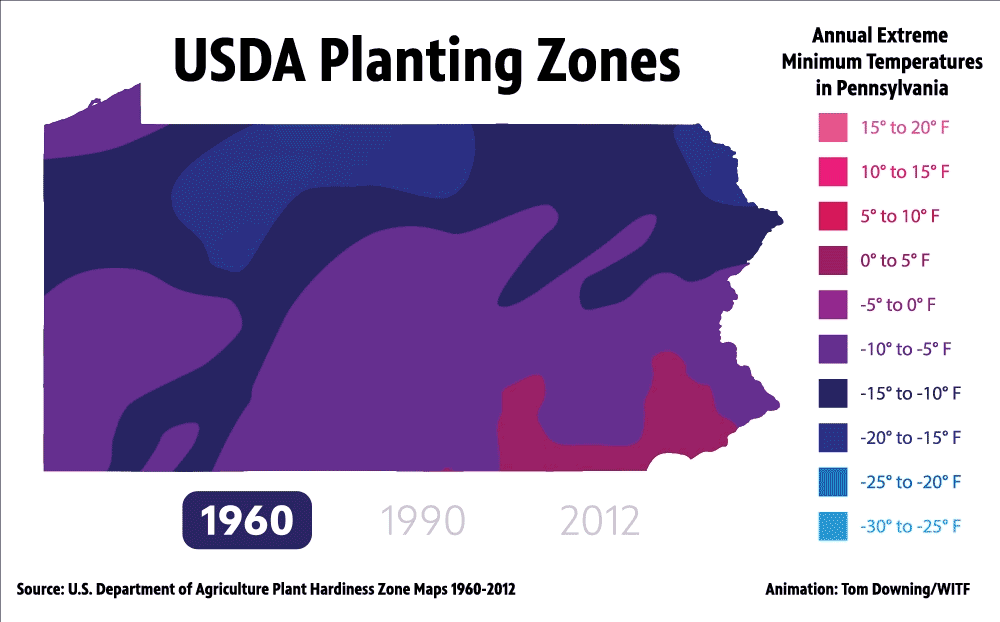
This animation shows how USDA hardiness zones, which help growers determine witch plants and crops are viable in their area, have changed since 1960.
That means a longer and warmer growing season for Pennsylvania farmers, with the opportunity to grow some crops that didn’t used to do well. But it also means some crops that need cold weather won’t be successful anymore.
Armen Kemanian, a professor with Penn State’s Department of Plant Science, said the increased chance of extreme weather will bring new risks, because extremes “really shake up the system.”
“So one thing is a hot day. A totally different thing is three hot days in a row,” Kemanian said. “That has a lot more impact than a drift in the average temperature.”
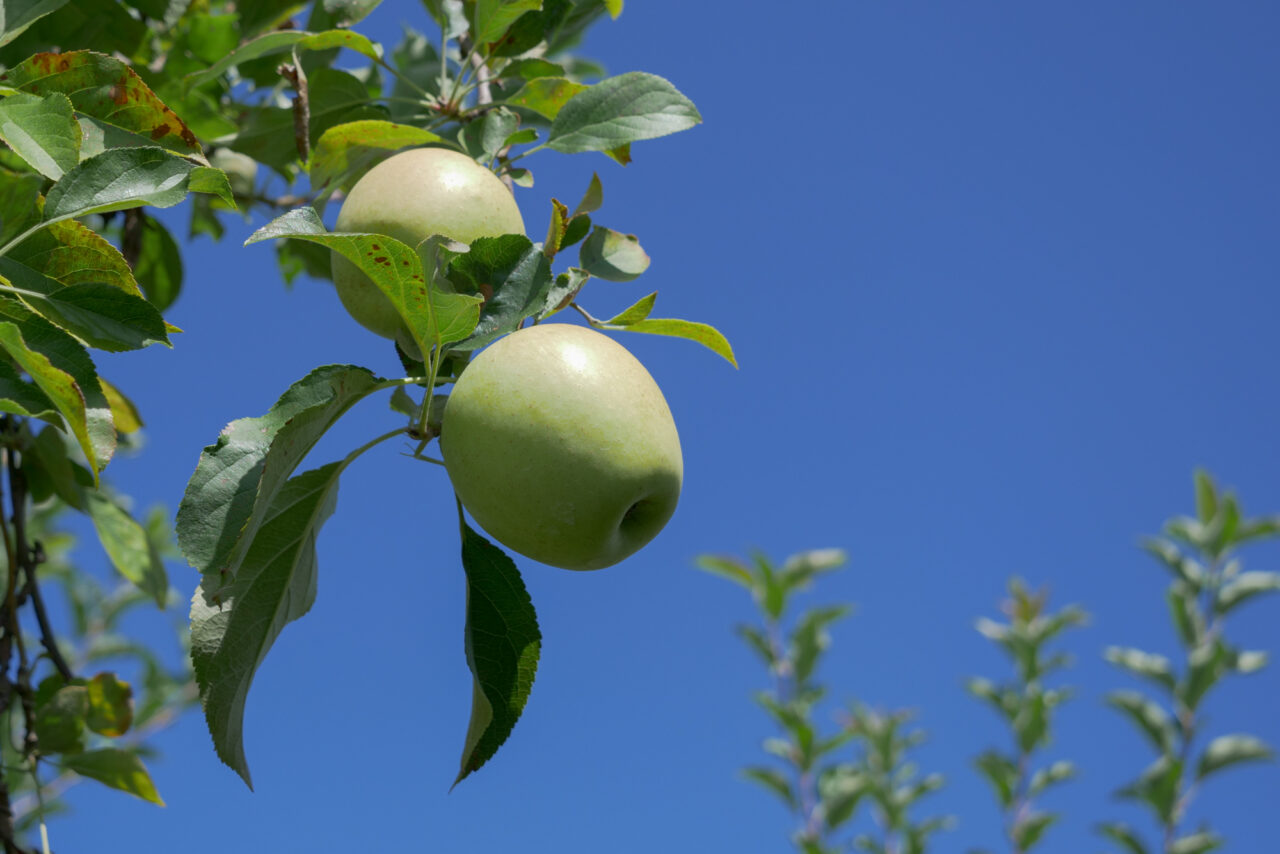
Kemanian said success of some crops and farms could come down to the distribution of stressors throughout the year, like heavy rains or cold snaps. Warmer weather in general could allow farmers to plant and harvest two crops in one year. But if one gets wiped out in an early frost, for example, the benefits are limited.
It’s hard to predict, exactly, what the changing climate will mean for each farmer, Kemanian said.
McPherson is familiar with extreme weather. Maple Lawn Farms has offered a corn field maze in the fall for over two decades. But after particularly wet years in 1998 and 2002 threatened the corn – and ticket sales – McPherson worried they could go out of business.
“Because if we lose even one weekend in October with three rainy days, that is a huge chunk of apple harvest, corn maze tickets and everything,” he said. “So, we have a lot of exposure there and that’s why we’re trying to move to other seasons.”
McPherson is hedging his risk with other fruits – blueberries, cherries, and peaches – and even flowers. He chooses crops with a wow factor to attract people. Most things on the farm are pick-your-own. McPherson said he wants to offer guests good quality produce, and he wants them to enjoy the whole farm experience. Over the years he’s added a kid-centered fun park – with puzzles, games, and small rides like slides – and a winery.
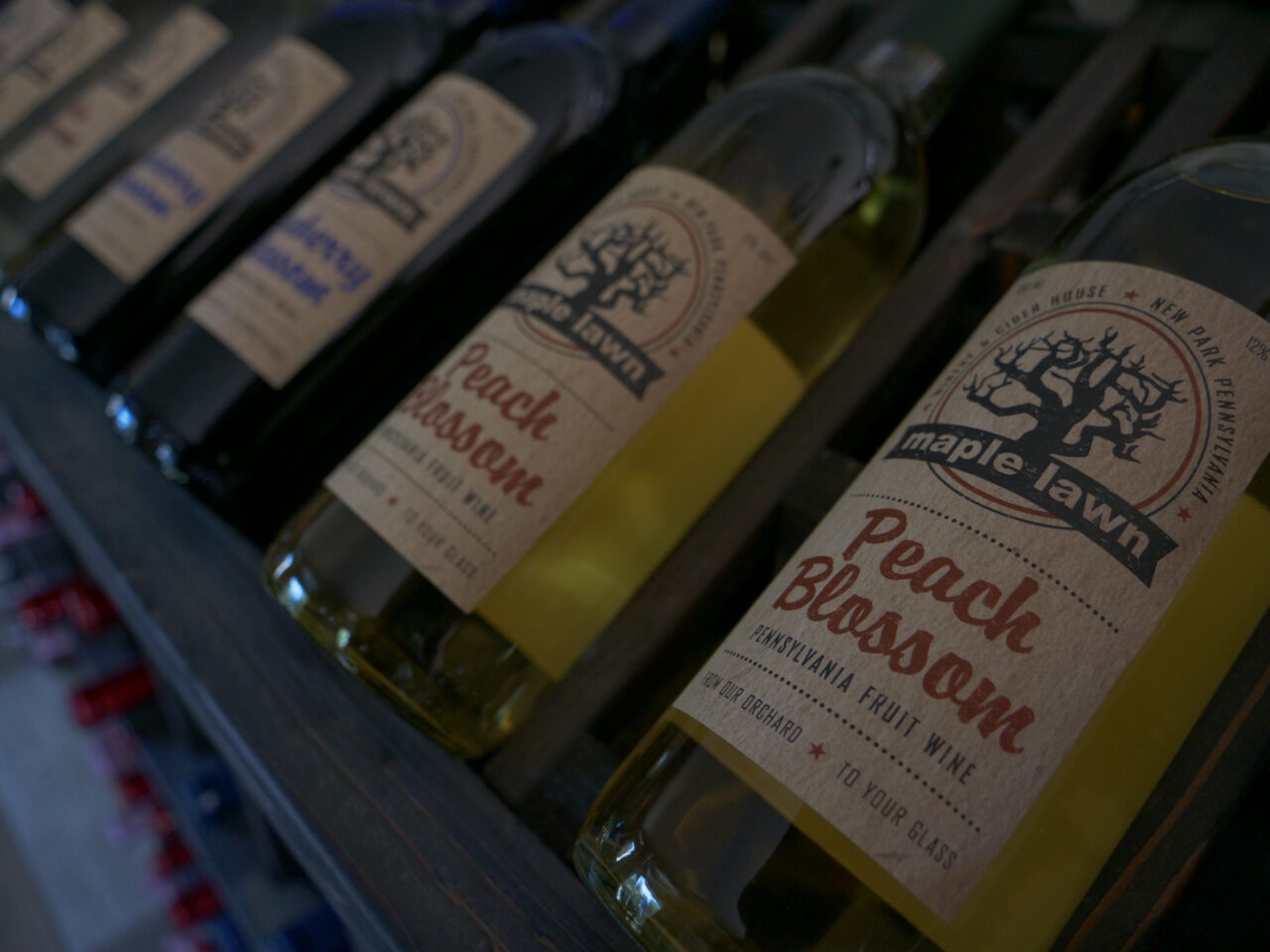
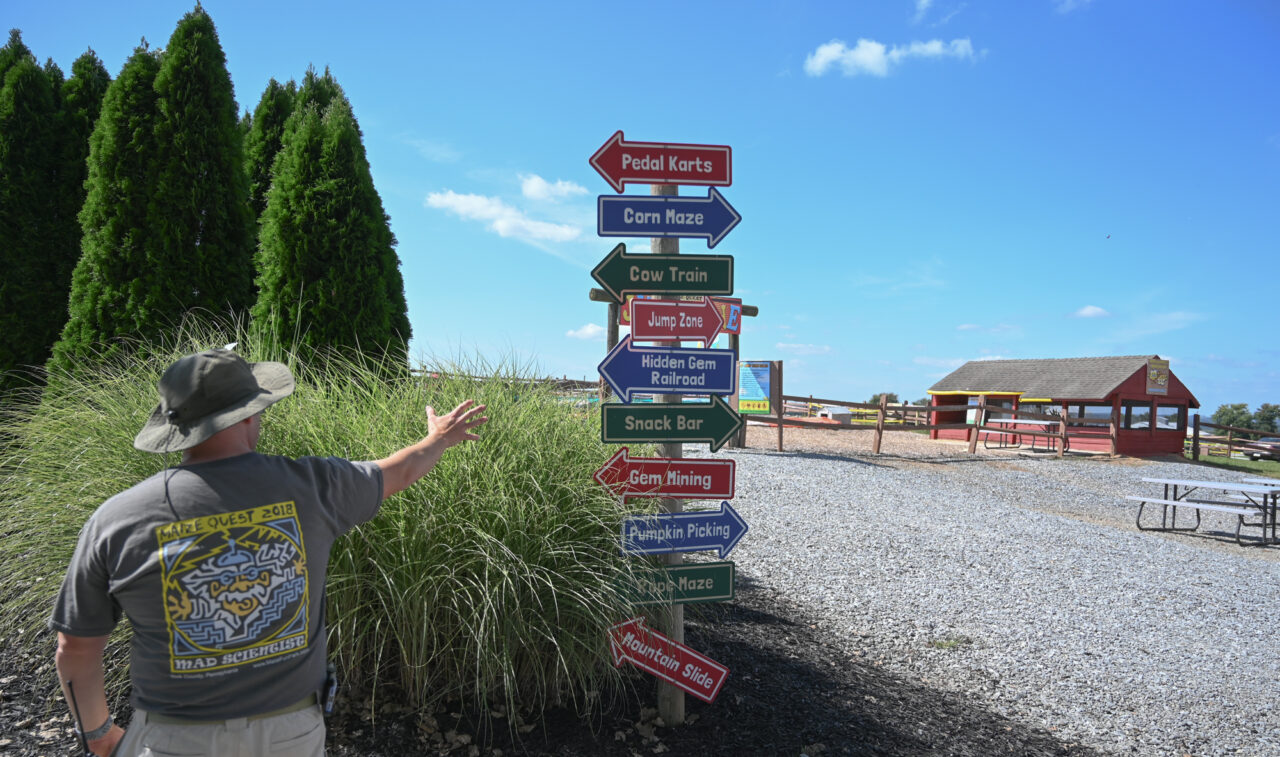
McPherson said he is surprised by his latest crop: an acre of lavender planted on a ridge overlooking a large valley. He grew five varieties totaling around 2,000 plants to spread out the bloom time of the flowers.
McPherson said the soil in the field is too thin and dry for corn, but perfect for drought-tolerant lavender. The plants start blooming in June, attracting pollinators to the farm and extending the agro-tourism season even longer. The farm hosted its first lavender festival this summer, during which guests could make sachets of lavender and take Instagram-worthy photos.
Experts say diversification can make farmers less vulnerable to a changing climate, though there will be nuances.
Michael Roth, policy director at the Pennsylvania Department of Agriculture, said changes to the climate can open up potential for diseases and invasive species. For example, Pennsylvania is dealing with an outbreak of highly pathogenic avian influenza.
“If you do have chickens on your premises, that can stop not only your chicken business, if it would come to your farm, but all the other business,” Roth said.
Hannah Smith-Brubaker, executive director of Pasa Sustainable Agriculture, has heard of a lot of farmers opening up direct-to-consumer sales and of fruit growers switching varieties to handle warm weather. Annual crop growers are relying more on high tunnels–temporary structures that act as greenhouses to protect crops.
“On my own farm, boy, we just can’t follow the rhythms and planting and harvesting schedules that we used to be able to for decades,” she said. “We’re finding that the spring weather is so variable, the fall weather is so variable, and the summer weather has so many longer, short term droughts. But then we’ll just get a deluge of rain.”
Smith-Brubaker said it will take a change in practices, not just crops, to withstand climate change.
“When it comes down to it, farmers are really going to have to make sure that the manner in which they are farming is mitigating the risks associated with climate change and not worsening them,” she said.
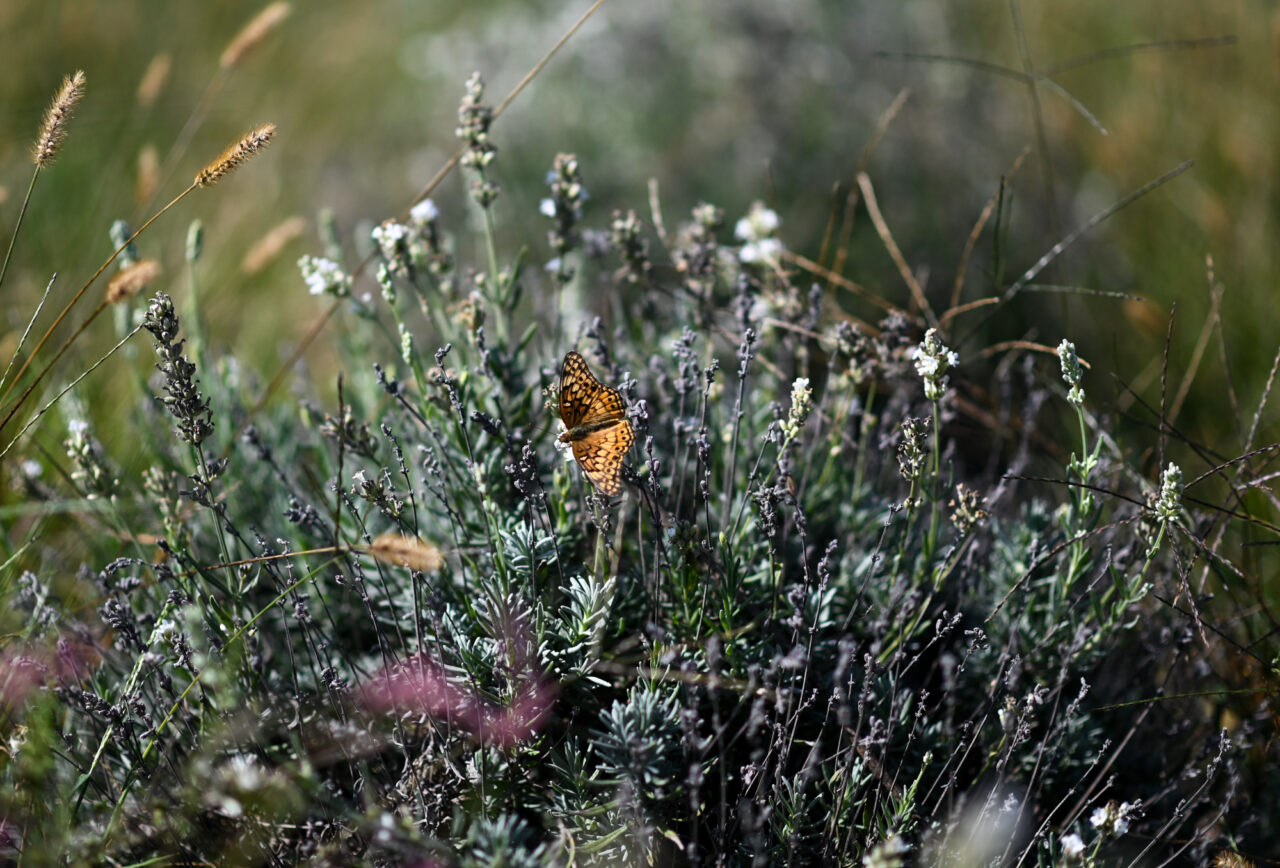
Pasa was recently awarded a federal grant to promote climate-smart farming practices. Those include planting cover crops over the winter to let those plants store carbon in their roots, and reducing tillage so carbon stays trapped in the soil.
McPherson’s agritourism business has helped Maple Lawn Farms weather the unexpected. But it’s not his only solution. He uses cover crops and installed solar panels on his barn a few years ago. He said farmers understand the risks that are coming.
“We’re the first people to take climate seriously, right? Because we depend on the weather every single day,” he said.
But, even if it rains today, McPherson knows he has other days to make up for it.
StateImpact Pennsylvania is a collaboration among WITF, WHYY, and the Allegheny Front. Reporters Reid Frazier, Rachel McDevitt and Susan Phillips cover the commonwealth’s energy economy. Read their reports on this site, and hear them on public radio stations across Pennsylvania.
(listed by story count)
StateImpact Pennsylvania is a collaboration among WITF, WHYY, and the Allegheny Front. Reporters Reid Frazier, Rachel McDevitt and Susan Phillips cover the commonwealth’s energy economy. Read their reports on this site, and hear them on public radio stations across Pennsylvania.
Climate Solutions, a collaboration of news organizations, educational institutions and a theater company, uses engagement, education and storytelling to help central Pennsylvanians toward climate change literacy, resilience and adaptation. Our work will amplify how people are finding solutions to the challenges presented by a warming world.